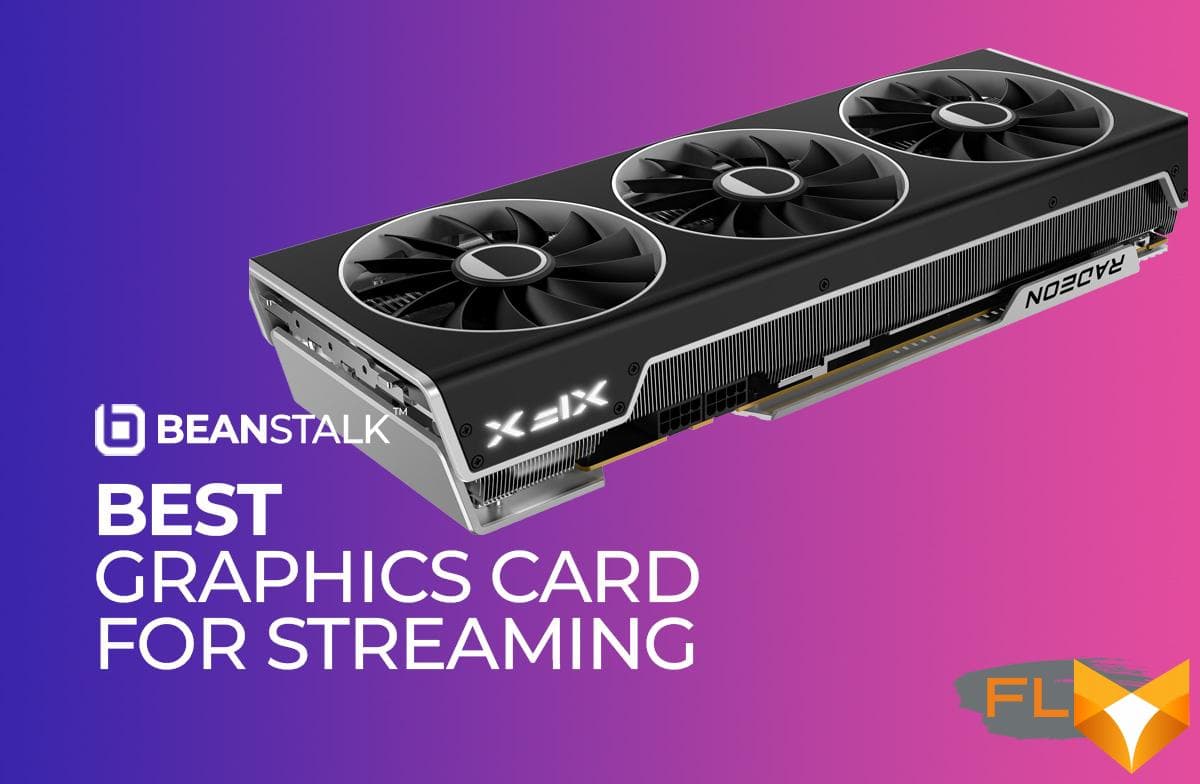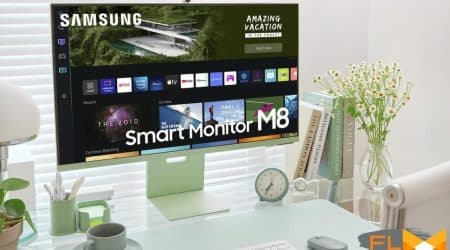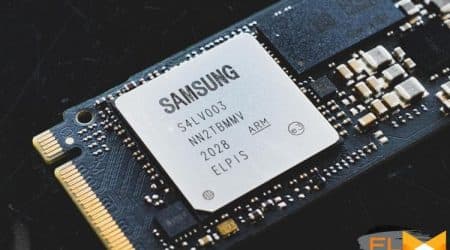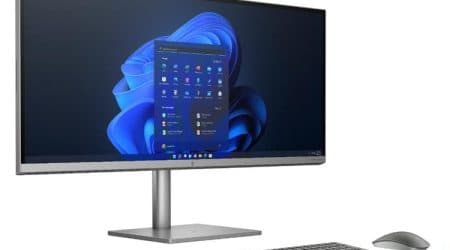


Best Graphics Card for Streaming and Seamless Gaming Experience Best Gpu For Streaming
Streaming has become a popular way for gamers and content creators to share their gameplay and interact with their audience. Whether you’re a professional streamer or just starting out, having a powerful GPU is essential to ensure smooth and high-quality streaming.
When it comes to choosing the best GPU for streaming, there are several factors to consider. One of the most important factors is the GPU’s encoding capabilities. GPUs with built-in hardware encoders, such as NVIDIA’s NVENC or AMD’s VCE, can offload the encoding process from your CPU, resulting in lower CPU usage and better streaming performance. This means that you can stream at higher resolutions and bitrates without sacrificing gaming performance.
In addition to encoding capabilities, another important factor to consider is the GPU’s performance. A powerful GPU will not only enable you to play games at high settings but also ensure smooth streaming with minimal dropped frames and lag. Look for GPUs with a high number of CUDA cores or stream processors, as well as a high memory bandwidth, as these are important indicators of performance.
Lastly, compatibility with popular streaming software is also worth considering. Most streaming software, such as OBS or XSplit, have specific requirements and recommendations for GPUs. Make sure to check the software’s documentation or website to ensure that your chosen GPU is compatible and optimized for streaming.
Overall, the best GPU for streaming will depend on your specific needs and budget. However, with the right combination of encoding capabilities, performance, and compatibility with streaming software, you can ensure a seamless streaming experience for you and your audience.
Understanding GPU for Streaming best graphics card gaming
Streaming has become an increasingly popular way for people to share their gaming and creative content with a wide audience. In order to stream high-quality video and deliver smooth gameplay, a powerful Graphics Processing Unit (GPU) is essential.
What is a GPU?
A GPU is a specialized processor designed to handle graphics and image processing tasks. It takes the load off the central processing unit (CPU) by handling tasks related to rendering images, videos, and animations. GPUs are specifically designed to be highly efficient at performing these graphical tasks, which makes them well-suited for streaming applications.
Why is GPU important for streaming?
When streaming, the GPU plays a critical role in ensuring smooth and high-quality video output. It is responsible for rendering the game and encoding the video in real-time before transmitting it to the streaming platform. A powerful GPU can handle the heavy processing demands of streaming, while also providing a visually pleasing experience to the audience.
Streamers often use software encoders like OBS (Open Broadcaster Software) or XSplit to capture and encode the gameplay footage. These software encoders utilize the GPU’s power to encode the video efficiently without sacrificing performance. The quality of the video output and the overall stream performance heavily rely on the GPU’s capabilities.
A good GPU for streaming should have a high number of CUDA cores or stream processors, as well as ample video memory (VRAM). This ensures smooth rendering and encoding of the video, even in demanding games or resource-intensive applications.
Common GPUs used for streaming
There are several GPUs that are widely used by streamers for their streaming setups. Some popular choices include:
- NVIDIA GeForce GTX series
- NVIDIA GeForce RTX series
- AMD Radeon RX series
These GPUs offer a good balance between performance, price, and compatibility with streaming software. However, the choice of GPU ultimately depends on individual needs, budget, and specific streaming requirements.
In conclusion, a powerful GPU is crucial for streaming high-quality content and smooth gameplay. Understanding the role of the GPU in streaming and considering factors like CUDA cores, VRAM, and compatibility with streaming software can help streamers make an informed decision when choosing the best GPU for their streaming setup.
Factors to Consider
When deciding on the best GPU for streaming, several factors should be taken into consideration. Below are some key considerations to help guide your decision:
1. Performance
Performance is crucial for streaming, as it directly affects the quality and smoothness of your stream. Look for a GPU with a high core count and clock speed to ensure it can handle the demands of streaming without any issues.
2. Encoding and Decoding Capabilities
The ability to encode and decode video efficiently is essential for smooth streaming. GPUs with dedicated hardware for video encoding and decoding, such as NVIDIA’s NVENC or AMD’s VCE, can offload the processing power from the CPU, resulting in better performance and reduced strain on your system.
3. Video Memory
Video memory, or VRAM, is important for storing and processing large amounts of video data while streaming. Higher VRAM capacity allows for smoother streaming, especially when using higher resolutions or multiple monitors.
4. Software Support
Compatibility with popular streaming software, such as OBS or XSplit, is crucial. Ensure that the GPU you choose has proper support and optimization for the software you plan to use.
In addition to these factors, consider your budget, power requirements, and the specific streaming needs you have. By carefully considering these factors, you can choose the best GPU for streaming that meets your requirements and provides the optimal streaming experience.
Compatibility
When choosing a GPU for streaming, it’s important to consider its compatibility with your existing hardware and software setup. The GPU must be compatible with your motherboard, power supply unit, and other components in your system.
Before purchasing a GPU, check the specifications of your motherboard to ensure it has the necessary PCIe slots and power connectors to support the GPU you’re considering. Additionally, make sure your power supply unit has enough wattage to handle the power requirements of the GPU.
It’s also crucial to verify the compatibility of the GPU with your streaming software. Some GPUs may have specific requirements or features that are necessary for optimal streaming performance. Check with the software manufacturer or consult online forums and communities to ensure compatibility.
Additionally, consider the compatibility of the GPU with the video capture card or capture software you plan to use for streaming. These components need to work together seamlessly to capture and broadcast your gameplay effectively.
Finally, keep in mind that compatibility can also extend to the operating system you’re using. Some GPUs may have better driver support or performance optimizations for certain operating systems, so it’s worth considering this when making your decision.
By taking compatibility into account, you can ensure that your GPU is the perfect fit for your streaming setup and will provide smooth and high-quality streaming experiences.
Performance
When it comes to streaming, a high-performance GPU is essential for smooth and lag-free gameplay. The performance of a GPU is measured by factors such as its clock speed, number of cores, and memory bandwidth.
A GPU with a high clock speed ensures that the graphics and video processing tasks are handled quickly and efficiently. This is particularly important for streaming, as it allows for real-time encoding and compression of video data.
The number of cores in a GPU determines its ability to handle multiple tasks simultaneously. A GPU with more cores can handle complex streaming setups, such as running multiple applications and capturing footage from different sources at the same time.
Memory bandwidth is crucial for streaming, as it determines how quickly the GPU can access and process data. A GPU with higher memory bandwidth can handle high-resolution video streams and graphics-intensive games without any stutter or lag.
When choosing the best GPU for streaming, it’s important to consider the performance requirements of your streaming setup. If you plan to stream at high resolutions or play graphics-intensive games, investing in a high-performance GPU will ensure a smooth and enjoyable streaming experience.
It’s also worth noting that while a high-performance GPU is essential for streaming, other components of your PC, such as the CPU and RAM, also play a significant role in overall performance. To ensure optimal streaming performance, it’s recommended to have a well-balanced PC build with powerful components.
In conclusion, performance is a key factor to consider when choosing the best GPU for streaming. A high-performance GPU with a high clock speed, plenty of cores, and ample memory bandwidth will ensure smooth and lag-free streaming, even when running multiple applications and capturing footage from different sources simultaneously.
Video Encoding
Video encoding is the process of converting a source video into a format that can be easily streamed or stored. Streaming video requires efficient encoding to ensure smooth playback and reduce buffering. The GPU plays a crucial role in video encoding, as it can significantly accelerate the encoding process.
Hardware Acceleration
Many modern GPUs feature dedicated hardware encoders, such as NVIDIA’s NVENC or AMD’s VCE, which offload the encoding tasks from the CPU to the GPU. These hardware encoders are specifically designed for video encoding and provide excellent performance and quality.
Hardware encoding not only decreases the CPU usage, but it also improves the overall streaming quality. The GPU’s hardware encoder utilizes specialized algorithms to efficiently compress and encode video frames, resulting in lower network bandwidth requirements and reduced latency.
GPU Viewership
One of the key benefits of using a powerful GPU for video encoding is the ability to reach a wider audience. With hardware encoding, the GPU can handle demanding encoding tasks and simultaneously provide a high-quality stream to a larger number of viewers.
Additionally, certain GPUs support multiple encoding streams simultaneously, allowing you to stream to multiple platforms or offer different quality options without sacrificing performance. This flexibility is particularly beneficial for content creators who need to cater to varying viewer demands or stream to multiple platforms.
To determine the best GPU for streaming, it’s important to consider the hardware encoding capabilities and supported video codecs. GPUs with newer hardware encoders generally offer better performance and compatibility with the latest encoding standards.
| GPU | Hardware Encoder | Supported Codecs |
|---|---|---|
| NVIDIA GeForce RTX 3080 | NVENC | H.264, H.265 |
| AMD Radeon RX 5700 XT | VCE | H.264, H.265 |
| Intel UHD Graphics 630 | Quick Sync Video | H.264, H.265, VP9 |
When choosing a GPU for streaming, it’s important to consider not only the video encoding capabilities but also other factors such as gaming performance, power consumption, and cost. Finding the right balance between encoding power and overall GPU performance is crucial to ensure a smooth streaming experience.
Software Capabilities
When it comes to streaming, the software you use is just as important as the hardware. Having the right software capabilities can greatly enhance your streaming experience and help you produce high-quality content. Here are some software features to consider when choosing a GPU for streaming:
1. GPU Encoding
One of the most important software capabilities for streaming is GPU encoding. GPU encoding offloads the encoding process from the CPU to the GPU, resulting in lower CPU usage and better overall performance. This allows you to stream at higher resolutions and bitrates without sacrificing quality or dropping frames. Make sure the GPU you choose supports hardware encoding, such as NVIDIA’s NVENC or AMD’s VCE.
2. Streaming Software Compatibility
Another important factor to consider is compatibility with popular streaming software such as OBS Studio or Streamlabs OBS. These software solutions offer a wide range of features and customizability, allowing you to create professional streams with ease. Check if the GPU you are considering is supported by your chosen streaming software to ensure a seamless experience.
3. Multi-Stream Support
If you plan to stream to multiple platforms simultaneously, having a GPU that supports multi-stream encoding can be extremely beneficial. This feature enables you to encode and stream to different platforms, such as Twitch, YouTube, or Facebook, at the same time without overloading your system. It can significantly simplify your streaming setup and improve overall efficiency.
4. Game Capture Integration
Many streaming software solutions offer game capture integration, allowing you to capture gameplay footage directly from your GPU without the need for third-party software. This feature not only saves you time and effort but also reduces system resource usage, resulting in smoother streaming and better overall performance. Confirm that the GPU you choose is supported by your preferred streaming software’s game capture feature.
Overall, selecting a GPU with the right software capabilities is crucial for achieving a smooth and high-quality streaming experience. Consider these software features when choosing your GPU to ensure compatibility and maximize your streaming potential.
Top GPU Recommendations
Choosing the right GPU for streaming is essential to ensure a smooth and lag-free streaming experience. Here are our top recommendations for the best GPUs for streaming:
| GPU | Features |
|---|---|
| NVIDIA GeForce RTX 2080 Ti | Powerful performance, real-time ray tracing, dedicated hardware encoding |
| AMD Radeon RX 5700 XT | Excellent value for money, high performance, efficient power consumption |
| NVIDIA GeForce GTX 1660 Super | Affordable option, good performance, low power consumption |
| AMD Radeon RX 5600 XT | Great mid-range option, good performance for the price |
| NVIDIA GeForce RTX 2070 Super | High-performance GPU, ray tracing support, excellent encoding capabilities |
These GPUs offer a balance between performance, price, and streaming capabilities. Depending on your streaming needs and budget, one of these options should be able to meet your requirements. Happy streaming!
NVIDIA GeForce RTX 3080
The NVIDIA GeForce RTX 3080 is one of the best GPUs for streaming due to its powerful performance and advanced features. With its 2nd gen RTX architecture and 8GB of GDDR6X memory, this GPU can handle even the most demanding streaming tasks.
One of the standout features of the RTX 3080 is its real-time ray tracing capabilities. This technology allows for incredibly realistic lighting and shadows in games, enhancing the streaming experience for both the streamer and viewers. With the RTX 3080, streamers can provide a more immersive and visually stunning stream.
Another key feature of the RTX 3080 is its DLSS (Deep Learning Super Sampling) technology. DLSS uses AI to upscale lower-resolution images in real-time, resulting in higher-quality visuals without sacrificing performance. This is especially beneficial for streamers who want to maintain smooth gameplay while streaming at higher resolutions.
In terms of streaming performance, the RTX 3080 excels. It can handle demanding streaming software and encoding settings with ease, allowing streamers to maintain high-quality streams without experiencing any lag or dropped frames. With its powerful GPU, streamers can also take advantage of hardware encoding, which offloads the encoding process from the CPU and reduces performance impact.
The RTX 3080 also supports NVIDIA’s Broadcast app, which provides streamers with additional tools and features to enhance their streams. This includes background noise removal, virtual background effects, and auto frame tracking, further improving the streaming experience for both the streamer and viewers.
In conclusion, the NVIDIA GeForce RTX 3080 is an excellent choice for streamers. Its powerful performance, real-time ray tracing, DLSS technology, and streaming-specific features make it one of the best GPUs for streaming. Streamers can expect high-quality streams, visually stunning graphics, and a smooth streaming experience with the RTX 3080.
AMD Radeon RX 6800 XT
The AMD Radeon RX 6800 XT is a powerful graphics card that offers excellent performance for streaming. With its advanced architecture and high clock speeds, this GPU can handle demanding streaming tasks with ease.
One of the key features of the AMD Radeon RX 6800 XT is its high VRAM capacity. With 16GB of GDDR6 memory, this GPU can handle large streaming workloads without any issues. It provides smooth and lag-free performance, ensuring that your streams are of the highest quality.
The AMD Radeon RX 6800 XT also supports hardware-accelerated encoding, which is essential for streaming. This feature offloads the encoding process from your CPU to the GPU, resulting in improved performance and reduced CPU usage. This means that you can stream at higher resolutions and bitrates without impacting your system’s performance.
Furthermore, the AMD Radeon RX 6800 XT supports AMD’s Radeon Software, which includes advanced streaming features. These features allow you to customize your streaming settings, optimize your stream quality, and even add overlays and effects to enhance your stream’s production value.
Overall, the AMD Radeon RX 6800 XT is a top choice for streamers looking for a GPU that can handle their streaming needs. With its powerful performance, high VRAM capacity, and support for hardware-accelerated encoding, this GPU ensures that your streams are smooth, high-quality, and lag-free.
NVIDIA GeForce GTX 1660 Super
The NVIDIA GeForce GTX 1660 Super is an excellent choice for streaming due to its powerful performance and advanced features. With its 1408 CUDA cores and 6GB GDDR6 memory, it can handle demanding streaming tasks with ease.
One of the standout features of the GTX 1660 Super is its Turing architecture, which allows for improved performance and efficiency compared to previous generations. This means you can enjoy smooth streaming without any hiccups or lag.
Impressive Streaming Capabilities
Thanks to the GTX 1660 Super’s dedicated hardware encoder, streaming is a breeze. It supports hardware-accelerated encoding using NVIDIA’s NVENC technology, which significantly reduces the workload on your CPU. This means you can stream in high resolution and at high frame rates without sacrificing performance.
Additionally, the GTX 1660 Super supports advanced features like simultaneous broadcasting and encoding. This means you can stream your gameplay on multiple platforms at the same time, reaching a larger audience and boosting your streaming presence.
Optimized for Streamers
To further enhance your streaming experience, the GTX 1660 Super is compatible with NVIDIA’s suite of streaming software. This includes features like NVIDIA ShadowPlay, which allows you to easily capture and share your gameplay moments with your audience.
With the GTX 1660 Super, you can also take advantage of NVIDIA Broadcast, which offers advanced AI-powered features like background noise removal and virtual background effects. This ensures that your stream looks and sounds professional, without the need for additional equipment.
In conclusion, the NVIDIA GeForce GTX 1660 Super is a top choice for streamers looking for a powerful and reliable GPU. Its impressive performance, advanced streaming capabilities, and compatibility with NVIDIA’s streaming software make it an excellent investment for any streaming setup.
FAQ: Best gpu for streaming
What is the best GPU for streaming 4k?
The best GPU for streaming depends on your specific needs and budget. However, some popular choices among streamers include the NVIDIA GeForce RTX 3080 and the AMD Radeon RX 6800 XT.
Can I use a lower-end GPU for streaming 1080p?
Yes, you can use a lower-end GPU for streaming, but it may affect the quality and performance of your stream. Ideally, you should aim for a GPU that has sufficient power to handle the encoding and rendering tasks involved in streaming.
Do I need a separate GPU for streaming ?
Having a separate GPU for streaming is not a requirement, but it can significantly improve the overall performance of your stream. By offloading the streaming workload to a dedicated GPU, you can ensure a smoother streaming experience without impacting your gameplay.
What features should I look for in a GPU for streaming?
When choosing a GPU for streaming, it’s important to consider factors such as encoding capabilities, VRAM size, and overall power. Look for GPUs that support hardware encoding (such as NVIDIA’s NVENC or AMD’s VCE) as they can offload the encoding process from your CPU, resulting in better performance rtx 3060.




